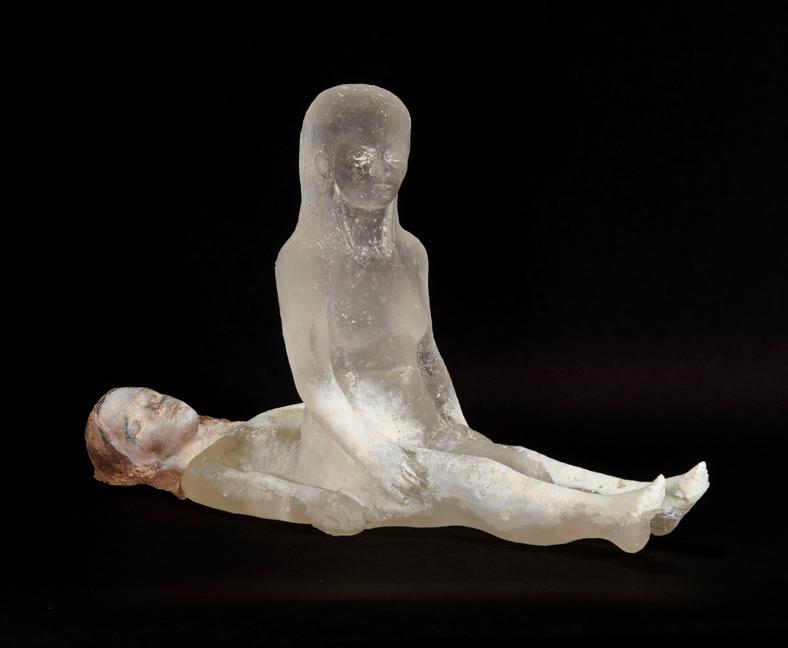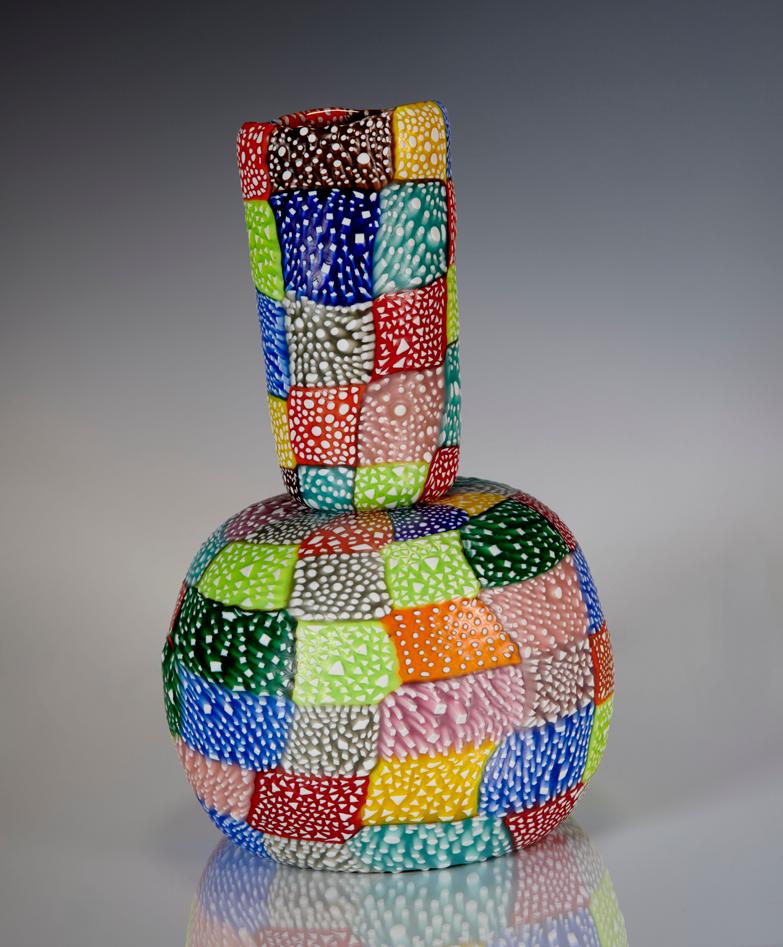
3 minute read
HIGHLIGHTS OF RECENT ACQUISITIONS IN STUDIO GLASS
by Marissa Hershon Curator of Ca’ d’Zan and Decorative Arts
In 2020, The John & Mable Ringling Museum of Art received a number of important donations of studio glass from Sarasota collectors, Warren and Margot Coville, and Philip and Nancy Kotler, who have been long-time supporters of The Ringling. These gifts substantially enhance the Museum’s holdings of contemporary art in glass, enabling The Ringling to explore a range of aesthetic and conceptual approaches created through a variety of glassworking techniques. Works by Matt Eskuche, Dante Marioni, Debora Moore, Charles Parriott, Lino Tagliapietra, Mary Shaffer, and others are a welcome and significant addition to the Museum’s collection of 20th and 21st century glass. Let’s take a closer look at a selection of the recent gifts that are currently on view in the Kotler-Coville Glass Pavilion.

Fig.1 Karen LaMonte (American, born 1967), Rose Dress, 2002. Kiln-cast Glass, 56 ¼ x 21 x 15 ¼ in. Gift of Phillip and Nancy Kotler, 2020. 2020.19.2 © Karen LaMonte Photo Credit: Gabriel Urbanek
Rose Dress by Karen LaMonte (fig. 1) and Sleep by Christina Bothwell (fig. 2) are among the figural works in glass sculpture donated by the Kotlers, reflecting the collectors’ interest in narrative and figural art. Next time you visit the Kotler-Coville Glass Pavilion, take a moment to visually compare the two works. These offer an interesting dialogue between the artists’ approaches to cast glass and depictions of the female form. In Bothwell’s mixed-media work, a woman appears to be both sleeping and sitting up, representing the body and soul. This work is inspired by her mysterious experience of feeling as though she lifted out of her physical body as she fell asleep during her sleep-deprived pregnancy. Rose Dress, on the other hand, has subverted the long tradition of the female nude in art by casting a life-size dress standing upright with the wearer absent. LaMonte’s work explores ideas about female beauty through a sartorial lens with remarkable detail of both clothing and the female body, which is subtly sculpted within the translucent glass.

Fig. 2 Christina Bothwell (American, born 1960), Sleep, 2008. Glass and Ceramic, 14 x 25 x 8 in. Gift of Philip and Nancy Kotler, 2020. 2020.19.3
The collection has been strengthened by the addition of a number of works by contemporary studio glass artists who have creatively taken centuries-old techniques in glassmaking in new directions. A Vase by Richard Marquis (fig. 3) shows his bold adaptation of murrine, a Venetian technique using cross-sections of glass canes to create surface patterns.

Fig. 3 Richard Marquis (American, born 1945), Vase, c. 1998. Glass, 8 1/4 × 5 × 5 1/2 in. Gift of Warren and Margot Coville, 2020. 2020.3.8
Marquis learned to master the technique at the famous Venini factory in Italy and for decades since has been incorporating murrine into spunky and irreverent forms, like this vase with all-over colorful squares with polka dots. Another colorful work to come into the collection is Yellow Heart Amulet Basket by Laura Donefer (fig. 4). This work’s bright yellow color is stunning to see in-person. Donefer created the array of glass beads and rods using a flameworking torch and assembled them into a blown-glass vessel as her contemporary version of apotropaic objects invested with protective powers, which have a history extending back to ancient cultures.

Fig. 4 Laura Donefer (Canadian-American, born 1955), Yellow Heart Amulet Basket, 2012, Glass and thread, 37 x 29 x 29 in. Gift of Warren and Margot Coville, 2020. 2020.3.4 © Laura Donefer
The yellow color has additional meaning related to the artist’s discovery of relatives who perished in the Holocaust, and references Jews who were forced to wear a yellow Star of David under the Nazi regime. This work is meant to honor Holocaust survivors and the millions of lives lost, and also inspire hope with its beautiful coloration and intricacy. We are thrilled to add these works to the Museum’s glass collection and hope that on your next visit to The Ringling, you will take a closer look and contemplate the beauty, complexity, and depth of meaning expressed in glass.




